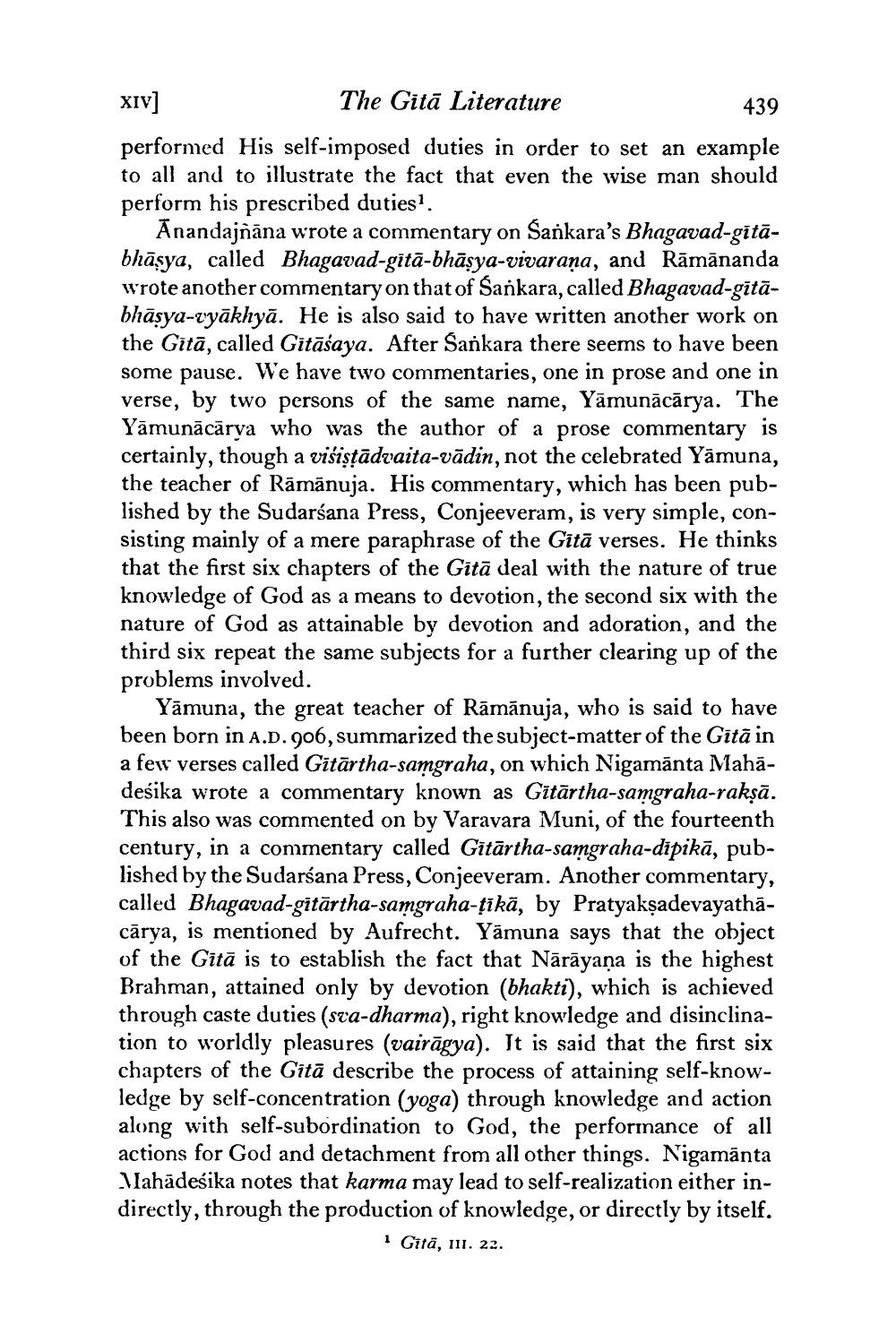________________
XIV] The Gitā Literature
439 performed His self-imposed duties in order to set an example to all and to illustrate the fact that even the wise man should perform his prescribed duties.
Anandajñāna wrote a commentary on Sankara's Bhagavad-gitābhāsya, called Bhagavad-gitā-bhāsya-vivarana, and Rāmānanda wrote another commentary on that of Sankara, called Bhagavad-gītābhāsya-vyākhyā. He is also said to have written another work on the Gitā, called Gitāśaya. After Sankara there seems to have been some pause. We have two commentaries, one in prose and one in verse, by two persons of the same name, Yāmunācārya. The Yāmunācārya who was the author of a prose commentary is certainly, though a visisțādvaita-vādin, not the celebrated Yāmuna, the teacher of Rāmānuja. His commentary, which has been published by the Sudarśana Press, Conjeeveram, is very simple, consisting mainly of a mere paraphrase of the Gītā verses. He thinks that the first six chapters of the Gītā deal with the nature of true knowledge of God as a means to devotion, the second six with the nature of God as attainable by devotion and adoration, and the third six repeat the same subjects for a further clearing up of the problems involved.
Yāmuna, the great teacher of Rāmānuja, who is said to have been born in A.D.906, summarized the subject-matter of the Gītā in a few verses called Gītārtha-samgraha, on which Nigamānta Mahādesika wrote a commentary known as Gitārtha-samgraha-rakṣā. This also was commented on by Varavara Muni, of the fourteenth century, in a commentary called Gītārtha-samgraha-dipikā, published by the Sudarśana Press, Conjeeveram. Another commentary, called Bhagavad-gitārtha-samgraha-ţikā, by Pratyakşadevayathācārya, is mentioned by Aufrecht. Yāmuna says that the object of the Gītā is to establish the fact that Nārāyaṇa is the highest Brahman, attained only by devotion (bhakti), which is achieved through caste duties (sta-dharma), right knowledge and disinclination to worldly pleasures (vairāgya). It is said that the first six chapters of the Gītā describe the process of attaining self-knowledge by self-concentration (yoga) through knowledge and action along with self-subordination to God, the performance of all actions for God and detachment from all other things. Nigamänta Mahādesika notes that karma may lead to self-realization either indirectly, through the production of knowledge, or directly by itself.
Gitā, 11. 22.




